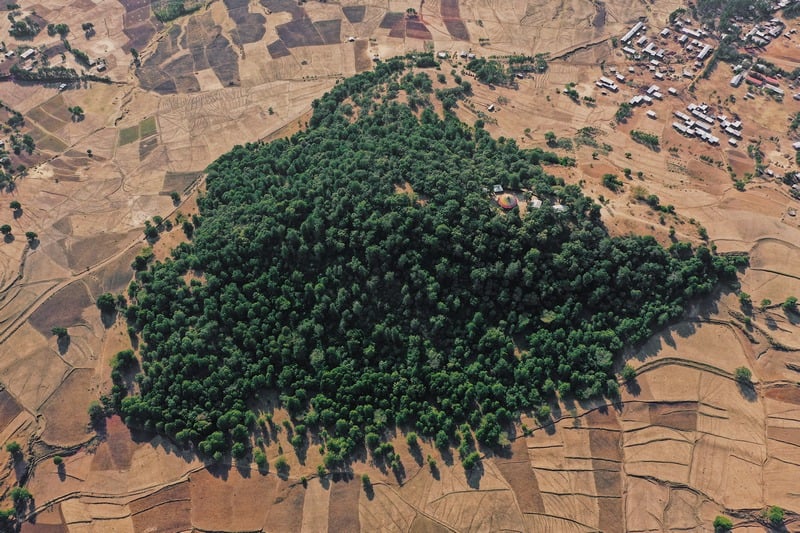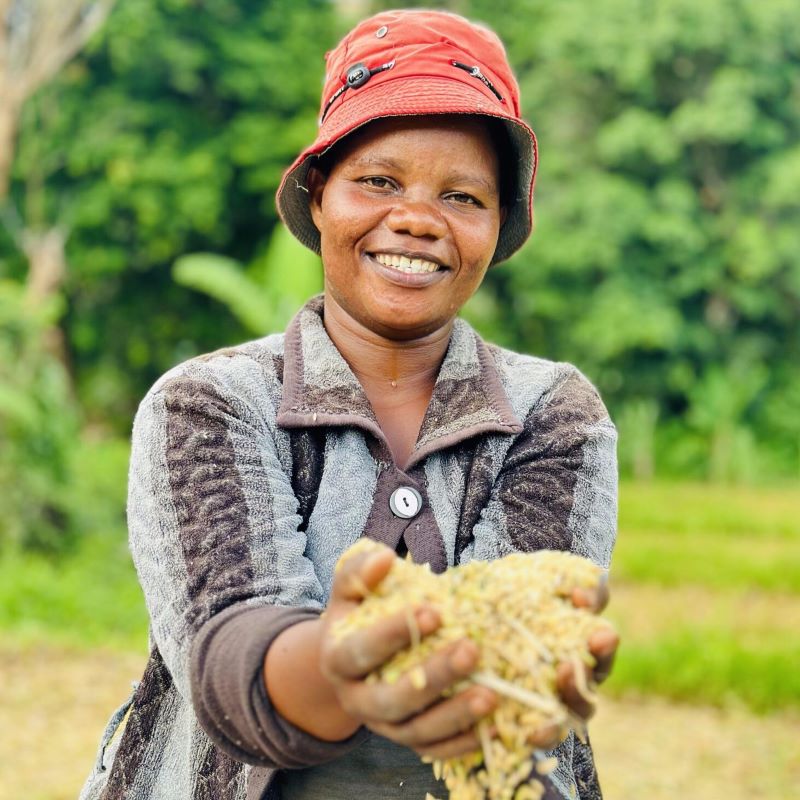In the past 20 years, Ethiopia has been devastated by deforestation. Extensive agriculture, cattle herding, and increased population pressure, reduced forest cover to just 4.2% by 2000. Since then, the species richness of Ethiopia’s forests has been declining, and the remaining forests are fragmented, impoverished, and have only a fraction of the diversity they once had.
In the northern highlands of Ethiopia, however, patchy remnants of ancient forests can still be found around the Ethiopian Orthodox Tewahedo Churches (EOTC). When a traveler sees a patch of thriving trees in a deserted landscape, they can be sure that there is a church in the middle. These majestic churches are visible from a great distance and are usually built on small hills overlooking the surrounding villages. While forests in other areas have been completely destroyed and converted into farms and grazing lands over centuries, forests on EOTC lands have survived as islands of biodiversity in a sea of deforested landscapes.
The EOTC is one of the oldest Christian churches in the world and has a long history of conserving forest resources. They believe nature includes human beings, forests, animals, water, other land features, and the nation as a whole. Although the main purpose of these churches is to be a place for worship, burials, and religious festivals, they also provide valuable habitats for plants and animals and green spaces for people. The church believes that these forests are sacred land, and the community has protected them through centuries-old conservation methods. Because of their traditional beliefs, these forests are relics of ancient and largely lost forest ecosystems, thriving hotspots of biodiversity for indigenous species. These sacred forests, stretching several hundred acres around EOTC churches, may be key to restoring Ethiopia’s degraded land.
This restoration depends on church forests’ long-term sustainability. In spite of the longstanding tradition of conservation and the forests’ long history, church forests are not immune to deforestation, overgrazing, and natural disasters such as drought. As a result, the biodiversity of some of these church forests is being depleted. Some tree species in church forests are decreasing, and several tree species appear to have stopped regenerating. Threats to church forest biodiversity have also impacted agricultural productivity. For example, legume production has declined due to the disappearance of pollinators that live in church forests. If these trends continue, we risk seeing widespread deterioration of church forests.
Church forest restoration efforts should focus on expanding forest areas to maintain diversity and healthy ecosystems. This can be done by interconnecting some forest patches, and creating new forest patches to support them. Forests are meant to be part of a landscape mosaic. When forests become fragmented through deforestation or land use, their health and biodiversity are at risk. In addition to planting new trees, we need to encourage tree species regeneration. Things like reducing grazing and wood harvesting, transplanting seedlings, sowing seeds, and litter removal will help interconnect church forests and protect them from degradation.
Restoration and reforestation in rural Ethiopia is possible. If we manage church forests and their nearby farms well, we can restore all of the biodiversity that has been lost. As we move forward, we are inspired by the religious leaders and farming communities who are fighting to keep these ancient forests alive for generations to come.



















[…] https://plantwithpurpose.org/stories/ethiopian-church-forests-an-ancient-key-to-biodiversity/ […]